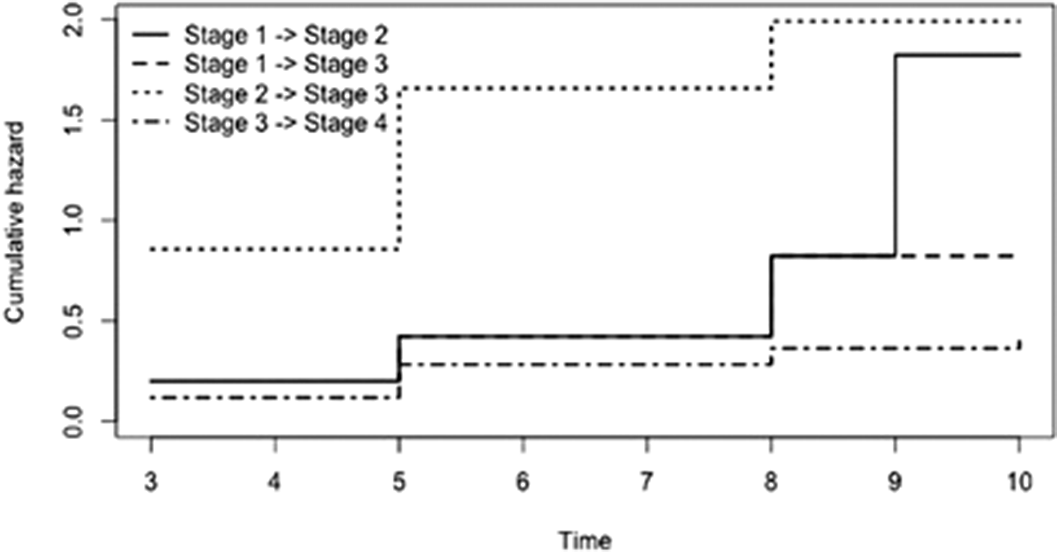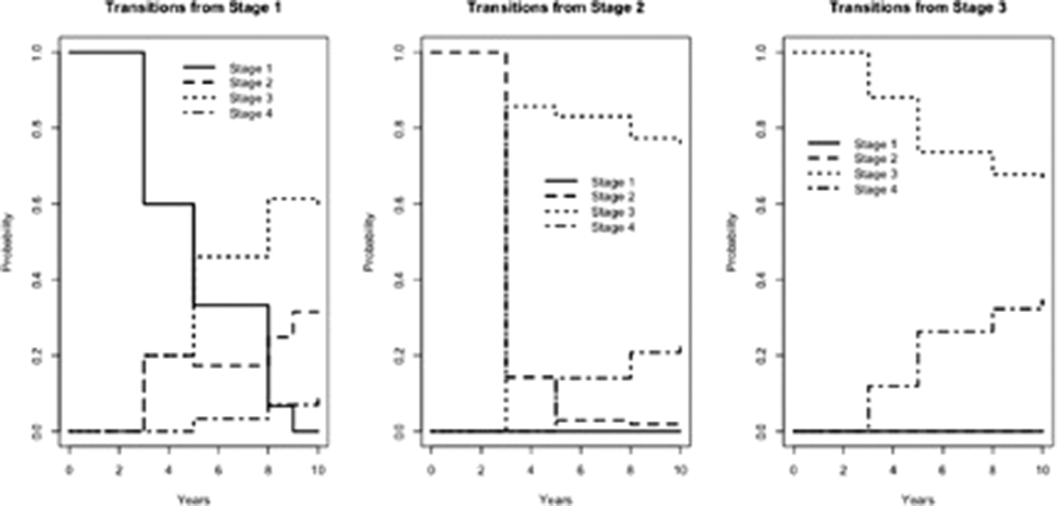No CrossRef data available.
Article contents
Assessing progression in Bipolar Disorder: a staging model tested in a sample over ten years of observation
Published online by Cambridge University Press: 19 July 2023
Abstract
The longitudinal course of bipolar disorder (BD) is related to an active process of neuroprogression, associated with brain changes and functional impairment (Berk et al., Bipolar Disord 2014; 16(5):471-7). Several clinical factors may influence illness trajectories, including the number of episodes and hospitalizations, the presence of comorbidities, stressful life events and familiarity for psychiatric disorders (Post. Braz J Psychiatry 2020;42(5):552-557). Trying to better define such progression, several authors conceptualized different staging models for BD, each one emphasizing different aspects of illness.
In the present study, we focused on the Kupka & Hilleghers staging model, owing to its favorable ratio between the number of classes and transitions (Kupka & Hilleghers. Tijdschr Psychiatr 2012; 54(11):949-956). The aim was to investigate the transition of a sample of 100 BD patients through the different stages of illness across 10 years of observation, analyzing the potential role of clinical variables on the risk of illness progression.
Clinical stages of 100 BD patients (53 BDI and 47 BDII) were retrospectively assessed according to the model proposed by Kupka & Hilleghers at four time points: T0 (2010), T1 (2015), T2 (2018) and T3 (2020, at inclusion). Multistate Model using the mstate package in R and Markov model with stratified hazards were used for statistical analysis, to assess transition intensities across illness stages and the potential role of clinical variables on the risk of progression.
A significant stage progression emerged during the observation period (Figure 1). More in detail, high hazard of transition from stage 2 to stage 3 was observed (Figure 2). A significant effect on the transition rate from 3 to 4 was found for higher number of affective episodes lifetime (> 3 episodes) (p=0.03) and for elevated predominant polarity (p=0.01). Overall, the average time subjects spent in stage 0 was 30.8 years and for stage 1 was 0.78 years. After BD onset, patients spent an average of 0.78 years in stage 2, 6.21 years in stage 3 and 2.23 in stage 4.
Image:

Image 2:

Present preliminary results confirm the progressive nature of the disorder. An increased risk of transition across stages emerged for patients with higher number of episodes lifetime and with elevated predominant polarity, confirming the need of improving timing and accuracy of diagnosis and therapeutic interventions. Further studies are warranted with the aim of define a universal staging model for BD.
None Declared
- Type
- Abstract
- Information
- European Psychiatry , Volume 66 , Special Issue S1: Abstracts of the 31st European Congress of Psychiatry , March 2023 , pp. S575 - S576
- Creative Commons
- This is an Open Access article, distributed under the terms of the Creative Commons Attribution licence (https://creativecommons.org/licenses/by/4.0/), which permits unrestricted re-use, distribution, and reproduction in any medium, provided the original work is properly cited.
- Copyright
- © The Author(s), 2023. Published by Cambridge University Press on behalf of the European Psychiatric Association





Comments
No Comments have been published for this article.